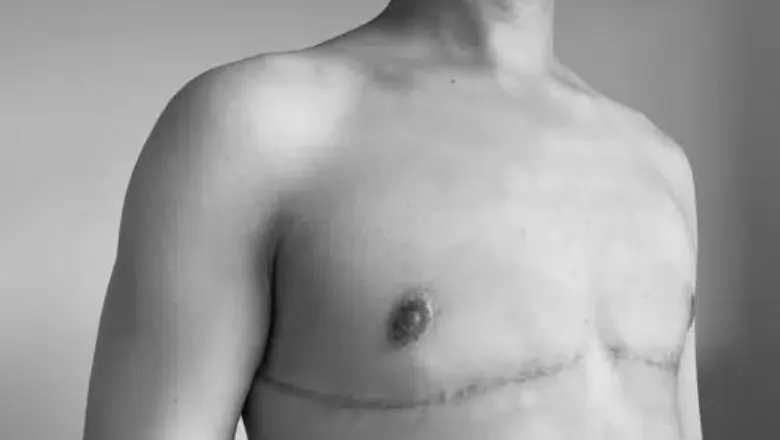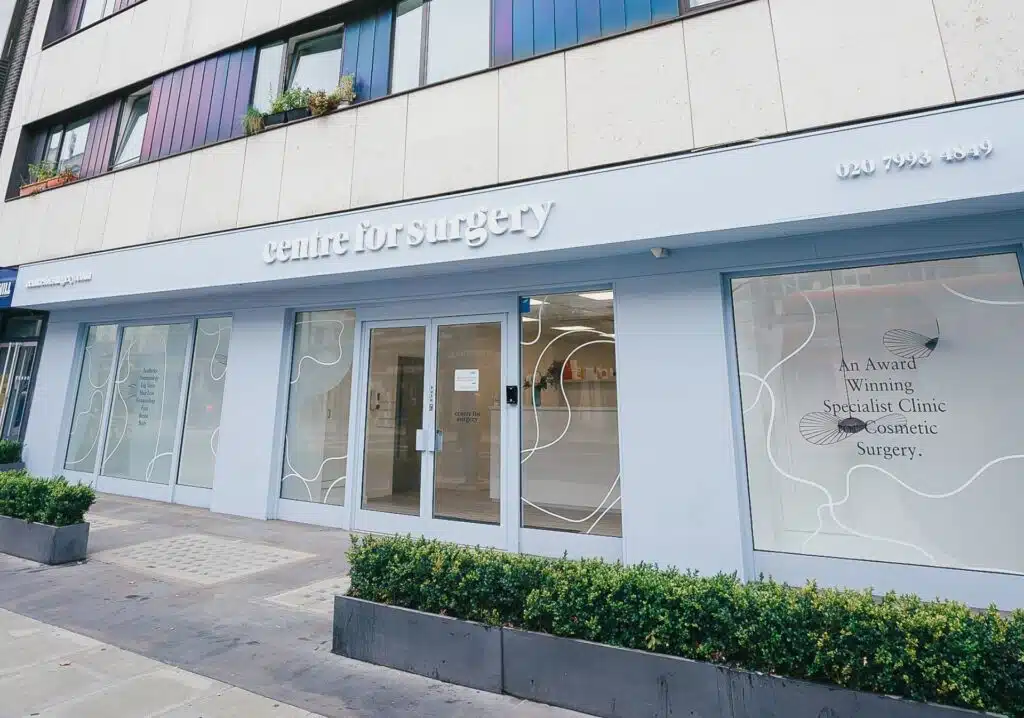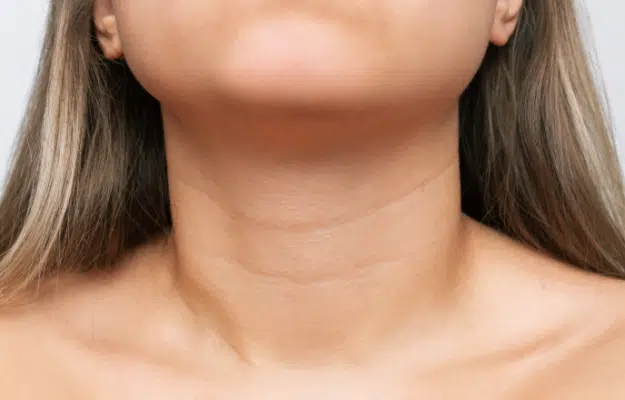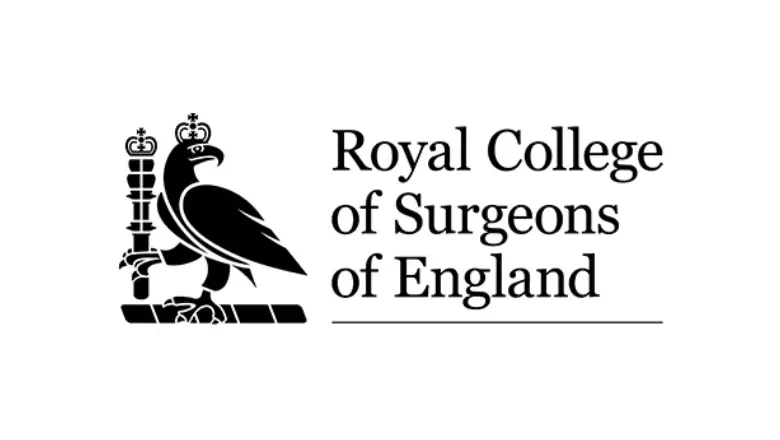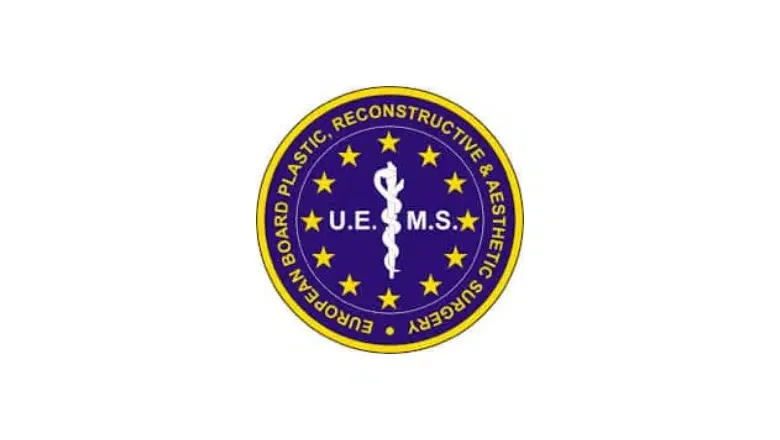Scars after FTM/N Top Surgery Procedure
The surgery for transforming a female or non-binary chest into a more masculine look is known as FTM/N top surgery. This surgery is all about making you feel more like yourself by creating a male-like chest. To really get how scars will develop, heal, and eventually fade away, it’s crucial to know what actually happens during the surgery. So let’s talk about that.
RELATED: WPATH Letter for Top Surgery in London
The operation mainly focuses on getting rid of unwanted breast tissue and any extra skin. It also changes the size, shape, or location of your nipples and the darker area around them, known as the areola. Every person’s body is different, so the exact steps in the surgery can change based on your own body and what you’re hoping to achieve. Usually, you’ll be under general anaesthetic for this, meaning you’ll be completely asleep, and the surgery itself can last from two to four hours.
There are typically two main ways that surgeons carry out this procedure. The first is called the “keyhole” method, or medically known as peri-areolar. This is often the best fit for people who have smaller chests and skin that’s good at snapping back into place. In this approach, the surgeon makes a single, round cut around your areola to remove the breast tissue.
The second common technique is called the double incision method. This is often used for people with larger chests or skin that doesn’t bounce back so easily. In this method, two horizontal cuts are made across your chest. Your nipple and areola might also be made smaller and then moved to a new, more masculine position. While this method can leave more noticeable scars, it also gives the surgeon more room to sculpt the chest for a more masculine look.
Here at Centre for Surgery, we’re experts in plastic surgery and offer a wide range of services. This includes surgeries like the FTM/N top surgery to help you achieve the physical appearance that matches your true self.
RELATED: Can Breasts Grow Back After FTM Top Surgery?
The Road to Recovery: What You Should Know After FTM/N Top Surgery
Recovering from FTM/N top surgery is more of a marathon than a sprint, requiring patience, careful attention, and strict adherence to your surgeon’s advice. The journey begins right after your surgery is completed. Usually, you’ll be able to leave the hospital or surgical centre on the same day the procedure was done, but your road to recovery has just started.
Immediately after the operation, you’ll be fitted with a surgical compression vest and will have surgical drains in place. These aren’t just for show; they serve critical roles. The compression vest helps to minimise swelling, while the drains help remove any fluid that accumulates, aiding in the healing process. These are typically removed about one to two weeks post-surgery, depending on your doctor’s recommendations and how well you’re healing.
When you get back home, your top priority will be rest and minimal activity. This isn’t the time to be a hero; you’ll need to drastically limit any activities, particularly those that involve using your upper body. That means lifting objects, doing strenuous exercises, or even stretching are off the table for at least four to six weeks. Ignoring this advice can risk your results and slow down your healing, so it’s essential to be disciplined.
As for symptoms, it’s not uncommon to experience a range of them including swelling, bruising, and a certain level of discomfort or even pain in the chest area. Don’t worry, this is usually manageable with medications. Your surgeon will likely prescribe a regimen of pain medication and anti-inflammatory drugs to make this phase as comfortable as possible for you.
Regular check-ins with your surgeon are an essential part of your post-surgery life. These appointments allow your healthcare team to monitor your healing closely, make any necessary adjustments to your treatment plan, and provide you with the reassurance and guidance you may need.
Roughly two weeks after the surgery, you’ll probably start to notice scars beginning to form. At first, they might look a bit red, raised, and firm, but don’t be alarmed. Scarring is a normal part of the body’s healing process. Over time, these scars will undergo a maturing process. They’ll gradually become softer, flatter, and lighter in colour, blending more into your skin.
Understanding Scar Formation Following Female to Male/Non-binary Top Surgery
When you undergo a surgical procedure like female-to-male or non-binary top surgery, your body’s natural response is to start the healing process, which includes the formation of scars. Understanding this process can help you set expectations and take the necessary steps for optimal healing.
Our skin has two primary layers: the outer layer, or the epidermis, and the inner layer known as the dermis. When a surgical cut goes deep enough to reach the dermis, the body’s healing mechanisms kick into gear.
This fascinating process has multiple stages, beginning with inflammation, followed by tissue formation, and ultimately, tissue remodelling. At first, your body acts quickly to stop any bleeding by forming a clot. At the same time, it releases specific chemicals that attract repair cells, known as fibroblasts. These fibroblasts get to work by producing collagen, a fibrous protein that serves as a sort of framework for new tissue to grow upon. This is where the scar formation process starts.
In the early weeks following surgery, you’ll likely notice that the scar appears reddish and might even be a bit raised. This is entirely normal. The redness occurs because new blood vessels are growing in the area to provide essential nutrients to the healing tissues. At this point, the collagen that’s been produced is in a bit of a chaotic, random pattern, making the scar feel harder or more firm than you might expect.
As time progresses—over weeks and months—the appearance and texture of the scar will begin to change. Your body goes through a remodelling phase where the new blood vessels that had formed will start to disappear. This is why mature scars often lose that initial redness. Simultaneously, the collagen fibres start to realign themselves in a more organized fashion, which makes the scar less raised and softer to the touch.
The Complex Journey of Scar Healing: Understanding its Various Stages
When it comes to healing scars, particularly after undergoing FTM/N top surgery, it’s crucial to understand that this is a multifaceted process happening over several distinct stages. This knowledge can guide you in managing your scar’s appearance and evolution more effectively.
The very first stage that kicks off the healing process is known as the inflammatory phase. Starting right after the injury occurs—be it from surgical incisions or otherwise—this stage can be easily identified. You’ll notice that the bleeding from the wound ceases and the surrounding area becomes red, somewhat swollen, and feels warm to the touch. Lasting usually for just a few days, this is the body’s way of cleaning out the wound by removing damaged tissues and actively fighting off any potential infection.
Following the inflammatory phase comes the proliferative phase. Here, your body gets down to the business of reconstruction. Collagen is produced at the wound site, and new blood vessels begin to form. These activities are designed to close the wound and initiate the scarring process. During this stage, which can last for a number of weeks, you’ll observe the scar becoming reddish and more raised than the surrounding skin.
The final stage in this complex process is known as the maturation or remodelling phase. This is the long-haul stage of scar healing and can take from several months up to a few years. It is during this period that the noticeable changes in the scar’s appearance occur. The scar starts becoming softer, flatter, and its colour fades from red to a paler hue. The collagen fibres within the scar are undergoing a restructuring process, altering the scar’s texture and look over time.
It’s essential to remember that scar healing isn’t a linear journey, and each individual’s experience will differ based on numerous factors such as skin type, age, and overall health. Moreover, the healing process can be influenced by how well you adhere to post-surgical care instructions. For the best outcome, it’s crucial to keep a close eye on your scars and maintain open communication with your surgical team at Centre for Surgery. Any concerns or unusual observations should be immediately shared with your surgeon to ensure optimal healing and results.
Taking Proper Care of Scars Right After FTM/N Top Surgery
Once you’ve undergone FTM/N top surgery, giving proper attention to your incisions is essential for both effective healing and minimising scar visibility. While your surgeon at Centre for Surgery will supply you with comprehensive care instructions, here are some general guidelines you should consider:
- Maintain Cleanliness: The first rule of thumb is to keep the surgical area clean. Always wash your hands thoroughly before touching the incision site. To clean the wound, use a mild soap and warm water, applying them gently. Steer clear of harsh scrubbing actions and avoid using potentially irritating substances like alcohol or hydrogen peroxide.
- Keep It Dry: Other than when you’re cleaning it, the incision area needs to remain dry. Excess moisture can create a breeding ground for bacteria, which could delay the healing process. After you’ve washed the area, dry it off gently by patting it with a clean towel.
- Shield from Sun Exposure: Sunlight can have an adverse effect on the healing process, making scars darker and slowing down their maturation. So, when you’re out and about, wear clothing that effectively covers the incision area. Alternatively, apply a high SPF sunscreen on the area, but only after getting the green light from your surgeon.
- Monitor for Signs of Infection: Pay close attention to symptoms like increasing pain, swelling, excessive redness, or any form of discharge coming from the wound. These could be signs of an infection, and if you notice any of them, get in touch with your medical team at Centre for Surgery without delay.
- Eat a Balanced Diet: The nutrients you consume can play a significant role in how well your body heals. Incorporating foods rich in protein, vitamin C, and zinc into your diet can supply your body with the essential building blocks it needs for skin repair and collagen formation.
Remember, these are general guidelines. For personalised advice tailored to your individual needs and surgery details, it’s imperative to consult your surgeon and adhere to the medical advice provided.
Caring for Your FTM Top Scars in the Long Run: Strategies for Better Healing and Less Visible Scars
Once you’ve navigated the initial healing stages after your FTM/N top surgery, the next focus becomes long-term scar management. The aim is to facilitate ongoing healing while minimising scar visibility. Here are some strategies you can employ:
- Keep It Moisturised: Using a fragrance-free moisturiser can have beneficial effects on your scar. Keeping the skin hydrated not only aids in maintaining its flexibility but can also improve the overall appearance of the scar. However, you should wait until the scar is fully healed before applying any product, and it’s always best to consult with your surgeon for personalised advice.
- Massaging Techniques: Massaging your scar can help to improve its appearance in the long run. The action can boost blood circulation to the area and can help in breaking down scar tissue, making it less noticeable. Your plastic surgeon can guide you on the best technique for massaging your particular scar.
- Ongoing Sun Protection: Even after the scar is well-healed, it’s still crucial to protect it from the sun. Prolonged sun exposure can darken the scar, making it stand out more prominently against your skin. Keep using sun protection measures like covering the scar with clothing or applying a high-SPF sunscreen when the area is exposed.
- Maintaining a Healthy Lifestyle: The state of your overall health can have a big impact on the healing of your scar. Once your surgeon gives you the all-clear, resuming regular exercise can contribute to better healing. Moreover, eating a balanced diet, staying well-hydrated, and getting enough sleep are also vital components that can help minimise scar visibility.
Treatment Approaches for Minimising Scar Visibility After FTM/N Top Surgery
If you’ve undergone FTM/N top surgery, you’ll know that scars are a natural part of the healing process. The visibility and healing rate of these scars can vary greatly depending on various factors like skin type, age, and how well you adhere to post-surgical care guidelines. While completely eliminating these scars might not be possible, several treatments can make a noticeable difference in their appearance. Let’s explore these treatment options:
Exploring Topical Treatments for Scar Improvement After FTM/N Top Surgery
Topical treatments involve applying products directly onto the scar to improve its appearance. These treatments can be quite effective, especially when applied consistently over a prolonged period. It’s always best to consult with your plastic surgeon before beginning any new treatment. Here’s a rundown of some common topical treatments for scar improvement:
Silicone-Based Products
Silicone has gained wide acceptance for its proven effectiveness in scar management. It functions by creating a protective barrier on the scar, helping to keep it moist. This regulates collagen production and growth factors, aiding in scar softening and reducing redness and itchiness. Silicone is available in multiple forms:
- Silicone Sheets: These are self-sticking sheets that you adhere directly to the scar. They are reusable and typically need to be worn for several hours each day.
- Silicone Gels or Creams: These formulations can be spread like any regular cream or gel, offering more flexibility for applying on scars that are in more visible or moving parts of the body.
- Silicone Sprays: These are convenient for covering larger scars or those in hard-to-reach areas.
Vitamin E
Vitamin E is well-known for its antioxidant properties and is commonly used to promote skin health. While some studies suggest it could improve the appearance of scars, the evidence is not universally conclusive. Vitamin E can be applied as an oil or cream.
Onion Extract
Onion extract possesses anti-inflammatory and antibacterial qualities. It is an active ingredient in some over-the-counter scar treatment products. However, research findings about its effectiveness in scar treatment are mixed.
Prescription Creams
If over-the-counter treatments don’t yield the results you’re hoping for, your plastic surgeon might recommend prescription-based topical treatments. For example, creams containing retinoids can be effective in remodelling the collagen structure within the scar, which can contribute to making it less noticeable.
Remember, for the best advice tailored to your individual case, consult your medical team at Centre for Surgery. They can guide you on the most appropriate treatment methods to improve the appearance of your scars after FTM/N top surgery.
Exploring Non-Surgical Options for Scar Improvement Post FTM/N Top Surgery
Non-surgical treatments offer another avenue for improving the appearance of scars that are more pronounced or causing discomfort. Conducted by trained professionals, these treatments can be quite effective but may require multiple sessions for optimal results. Below are some popular non-surgical options:
Laser Therapy
Laser therapy uses focused light beams to treat scars and improve their appearance in various ways—colour, thickness, and texture. There are several types of laser treatments to choose from, depending on the scar’s characteristics and the individual’s skin type:
- Ablative Lasers: These lasers remove thin layers of skin around the scar. The removal triggers the formation of new, healthier skin cells.
- Non-Ablative Lasers: These lasers work by stimulating collagen production beneath the skin without damaging the skin’s surface, improving the texture of the scar.
- Vascular Lasers: These are specifically designed to target blood vessels in the scar tissue, thereby reducing redness and improving colour.
Steroid Injections
Steroid injections can be particularly effective for treating hypertrophic or raised scars. The steroids work by reducing inflammation and inhibiting excessive collagen production. Over time, this can cause the scar to become flatter and softer.
Morpheus8 and Microneedling
Morpheus8 is a type of microneedling that uses fine needles to create tiny punctures in the skin, stimulating collagen production. This can improve the appearance of the scar over time. Microneedling treatments can be further enhanced by combining them with other therapies, such as topical creams.
FAQs about FTM/N Top Surgery Scars
What do FTM Top scars look like?
Scars are fibrous tissues that replace healthy skin following an injury or trauma such as wounds, acne, burns, and surgery. Your body’s response to skin injuries depends on factors such as age, genetics, the location on the body, and skin colour.
With FTM/N chest surgery, the techniques used will influence the resulting scars. Keyhole and peri-areolar incision patterns are less invasive and result in less scarring than double incision chest surgery.
- Keyhole incisions – Suitable for very small breasts. Incisions run around the lower circumference of the areola.
- Peri-areolar incisions – This technique benefits patients with small-to-medium-sized breasts. Incisions extend completely around the border of the areola.
- Double incisions – Large breasts require a larger incision to address excess skin and tissue. This technique involves horizontal or U-shaped incisions placed just beneath the chest muscle. Another incision is also made to relocate the nipple.
Scars will be most prominent in the six weeks following the procedure, appearing raised and dark against the rest of your skin. They gradually fade and flatten over time, with the final appearance not being apparent for 12-18 months.
How Long Will It Take for My Top Surgery Scars to Fully Heal?
The time it takes for top surgery scars to heal can differ quite a bit from one person to another. Your overall health, the surgical methods used, and how well you look after yourself after surgery all play a role. In simple terms, the initial healing where your wound closes up usually takes a few weeks. However, for your scar to become softer and less visible, you’re looking at a much longer time — often up to a year or even more.
Can I Get Rid of My Top Surgery Scars Completely?
The straightforward answer is no, you can’t entirely get rid of scars from top surgery. Scars are just the way your body heals itself after it’s been cut or injured. That said, there are lots of treatments available that can make your scars look a lot less noticeable. So, while you can’t make them vanish entirely, you can do a lot to help them fade as much as possible.
Can I Make My Scars Less Visible Without Seeing a Doctor?
Absolutely, there’s a good deal you can do on your own to care for your scars. Simple things like keeping the wound clean, massaging the scar, using silicone sheets or gels, and protecting the area from the sun can all help. Maintaining a balanced diet and staying hydrated can also make a difference. If you try all these and still aren’t happy with how your scars are healing, then it’s a good idea to chat with your plastic surgeon about more professional treatment options.
Does Exercising Have Any Impact on How My Scar Heals?
Yes, being active can affect how your scar heals, both positively and negatively. Right after your surgery, you should avoid any movements that put too much strain on the healing wound, as that could interfere with the healing process. But once you’re past the initial healing stage, some moderate exercise that doesn’t strain the scar can actually help. It boosts your blood flow, which can aid in making your scar softer and less noticeable over time.
How can FTM Top scars be minimised?
There are several things you can do to help reduce the appearance of scars:
- Scar massage: Once the incisions have fully healed, usually around 2-3 weeks post-surgery, you can start massaging your scars. This can help to soften and flatten them. It also increases blood flow to the area, which can help with the healing process.
- Silicone sheets or gels: These can be applied to the scars once they have fully healed. Silicone helps to keep the area hydrated, which can improve the appearance of scars.
- Avoid sun exposure: The sun can darken scars and make them more noticeable. Try to keep your scars covered and use a high-factor sun cream (SPF 30 or above) when they are exposed to the sun.
- Healthy lifestyle: A healthy diet and regular exercise can help your body heal and may improve the appearance of scars. Avoid smoking as it can impair the healing process and lead to worse scarring.
If these measures don’t produce the desired results, more invasive treatments can improve the appearance of scars. These include steroid injections, surgical revision, laser scar removal, microdermabrasion, and medical needling. Our team can recommend a specific treatment based on your skin type.
Will the FTM scars ever completely disappear?
Scars will fade over time, but they will never completely disappear. The goal is to minimise their visibility as much as possible. Remember, everyone heals differently, and it can take a year or more for scars to mature and fade. Be patient with your body as it heals.
Can I get a revision surgery to improve the appearance of my FTM Top surgery scars?
In some cases, scar revision surgery may be possible to improve the appearance of your scars. This typically involves removing the old scar tissue and carefully re-suturing the area to create a finer scar. This is usually considered only after at least one year post-surgery when the initial scars have had a chance to mature.
What if my FTM scars are hypertrophic or become keloids?
Hypertrophic scars and keloids are types of raised scars that can occur after surgery. If you notice that your scars are becoming thick, raised, or are extending beyond the boundaries of the original incision, it’s important to consult with your surgeon. There are treatments available, such as steroid injections or laser therapy, that can help manage these types of scars.
FTM Top Surgery at Centre for Surgery
Choosing the right facility and team for your top surgery is a crucial decision, and Centre for Surgery offers several key advantages:
Specialist Expertise: At Centre for Surgery, our surgical team consists of highly trained and experienced surgeons who are specialists in FTM top surgery. Our surgeons are up-to-date with the latest techniques and innovations, which ensures that you receive the highest level of care.
Personalised Care: Every patient is unique, and our team is committed to providing personalised care tailored to your individual needs. From the initial consultation to post-operative care, we will walk with you through each step, ensuring that you feel informed, comfortable, and confident.
Advanced Facilities: Our centre is equipped with state-of-the-art facilities and technology. We ensure a safe, clean, and comfortable environment for all our patients.
Comprehensive Support: We offer comprehensive support throughout your journey, from pre-operative preparation to post-operative recovery. We understand the emotional and psychological aspects of undergoing a transformative procedure like FTM top surgery, and we are here to provide the support you need.
Outstanding Results: Our ultimate goal is to help you achieve the results you desire. Our patients’ satisfaction and safety are our top priorities. Our track record and patient testimonials reflect our commitment to delivering outstanding results.
Accreditations: Centre for Surgery is fully accredited by all the relevant regulatory bodies, meaning you can trust in our high standards of care, proficiency, and ethical conduct.
By choosing Centre for Surgery, you are choosing a team of dedicated professionals committed to your care, well-being, and successful transition journey.
